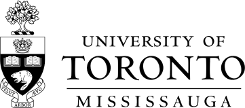The Gradinaru biophysics lab uses ultrasensitive optical techniques for quantitative measurements of protein structure and dynamics at the single-molecule level. By removing ensemble averaging, single-molecule methods have the unique ability to disentangle conformations and dynamics of biological systems and thus provide essential information for understanding their function. These techniques are ideal for applications such as protein and RNA folding, DNA replication, drug screening, genome sequencing, molecular motors, ion channels and membrane receptors.
We have built and continue to build/upgrade ultrasensitive microscopes that can track fluorescently-tagged molecules with nanometer accuracy and on time scales from picoseconds to minutes. Our versatile instruments can simultaneously record multiple parameters of the detected fluorescence signal, such as wavelength, lifetime, polarization anisotropy, photon bunching, etc, from which we can infer a wealth of information about the states and the dynamics of biological molecules and their local environment. A remarkable range of single-molecule fluorescence modalities are available in our lab: diffusion/burst-based and surface-based smFRET, (dual-color) FCCS, PET/ns-FCS, single-particle tracking, single-molecule photobleaching, multiparameter confocal imaging and TIRF microscopy.
Our main research projects are aimed at studying rapidly fluctuating conformations in intrinsically disordered proteins and ligand-dependent conformational and oligomerization dynamics of G-protein coupled receptors in live cells. We also collaborate on projects aimed at characterizing the inhibitory action of new synthetic drugs against oncogenic proteins, and the physical properties of nanoparticles for drug delivery, biosensing and cancer imaging applications. By nature, our research is highly interdisciplinary and lab members are being trained not only in Physics, but also in (bio)Chemistry, Math and Statistics, Computer Modelling and Coding, and Molecular and Cellular Biology. We are engaged in vibrant collaborations with several groups in the Chemistry and Biochemistry departments at UofT, at the Sick Kids Hospital in Toronto, and with several academic collaborators in Canada, US, UK and Australia.
